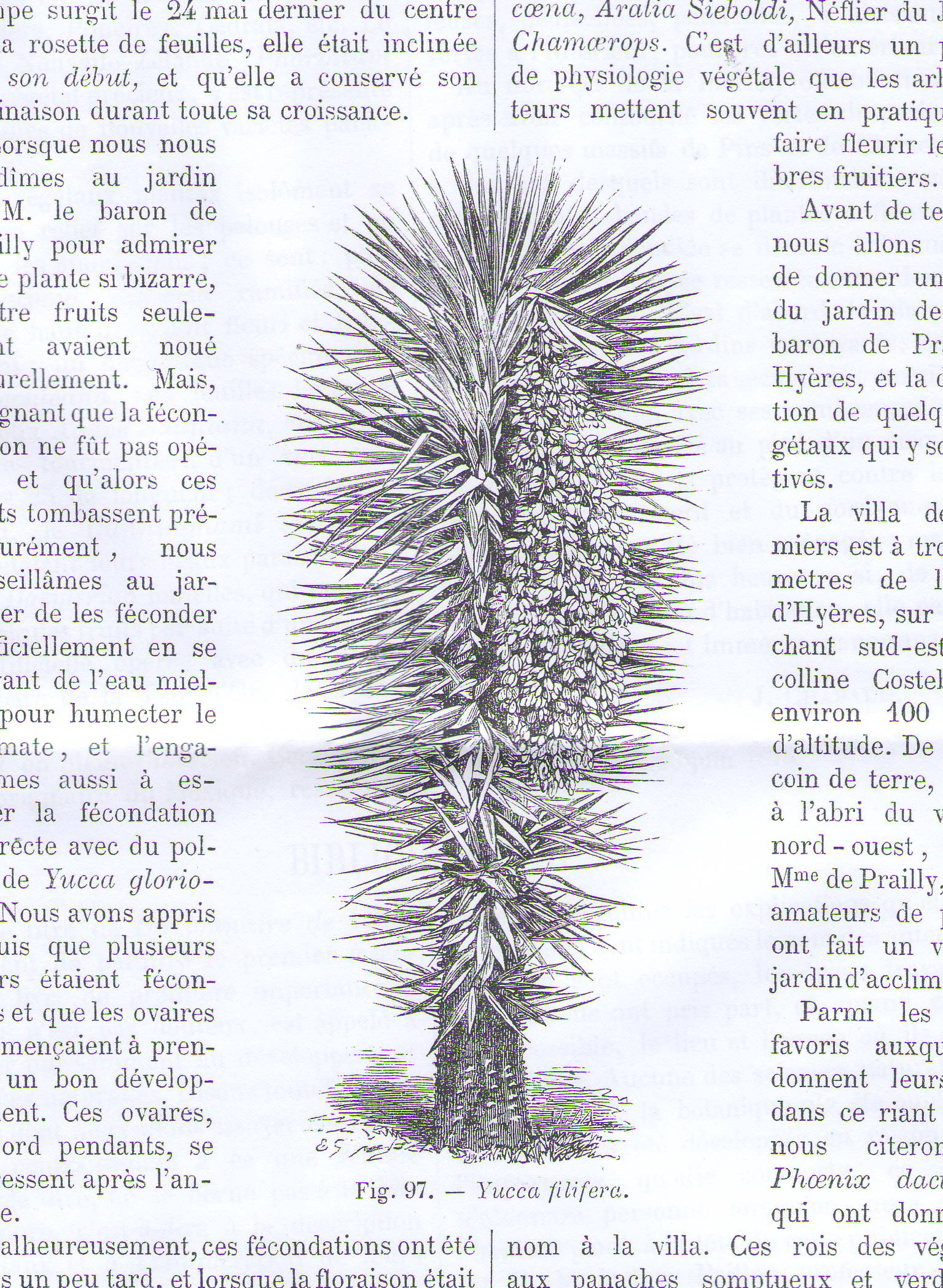Yucca Filifera on:
[Wikipedia]
[Google]
[Amazon]
''Yucca filifera'' is a member of the subfamily Agavaceae, family
Tropicos, Missouri Botanical Garden, 2013 It was later introduced to Europe and described for science by J. Benjamin Chabaud (1833-1915) in 1876.
 A tall, heavily branched yucca, ''Y. filifera'' has straight, ensiform leaves growing in rosette-shaped bunches from the end of each stem.R.J. Hodgkiss
A tall, heavily branched yucca, ''Y. filifera'' has straight, ensiform leaves growing in rosette-shaped bunches from the end of each stem.R.J. Hodgkiss
The Yucca Page
20 February 2012, accessed 25 March 2013 Its inflorescence hangs over and is made of many separate white flowers.
InfoJardin, Jardineros Paisajismo Plantas, 2013, accessed 25 March 2013 An enormous specimen of ''Yucca filifera'' stands in front of the Anderson Collection at the Cantor Arts Center, Stanford University. It was transplanted to this site in the 1880s from the nearby Arizona Garden. In the spring, it bears long clusters of white flowers, some well over a meter long.Yucca filifera, from ''Trees of Stanford''
/ref>
Asparagaceae
Asparagaceae (), known as the asparagus family, is a family of flowering plants, placed in the order Asparagales of the monocots. The family name is based on the edible garden asparagus, '' Asparagus officinalis''. This family includes both ...
, native to central Mexico
Mexico, officially the United Mexican States, is a country in North America. It is the northernmost country in Latin America, and borders the United States to the north, and Guatemala and Belize to the southeast; while having maritime boundar ...
.
History
It was discovered in 1840 in northeastern Mexico betweenSaltillo
Saltillo () is the capital and largest city of the northeastern Mexican state of Coahuila and is also the municipal seat of the municipality of the same name. Mexico City, Monterrey, and Saltillo are all connected by a major railroad and high ...
and Parras () on 19 May 1847 by merchant and explorer Josiah Gregg.Yucca filifera ChabaudTropicos, Missouri Botanical Garden, 2013 It was later introduced to Europe and described for science by J. Benjamin Chabaud (1833-1915) in 1876.
Description
 A tall, heavily branched yucca, ''Y. filifera'' has straight, ensiform leaves growing in rosette-shaped bunches from the end of each stem.R.J. Hodgkiss
A tall, heavily branched yucca, ''Y. filifera'' has straight, ensiform leaves growing in rosette-shaped bunches from the end of each stem.R.J. HodgkissThe Yucca Page
20 February 2012, accessed 25 March 2013 Its inflorescence hangs over and is made of many separate white flowers.
Status
''Yucca filifera'' is not considered to be threatened by theIUCN
The International Union for Conservation of Nature (IUCN) is an international organization working in the field of nature conservation and sustainable use of natural resources. Founded in 1948, IUCN has become the global authority on the status ...
, as it has a very large range and its population appears to be stable. It is locally used for fibers, and may experience some threat from habitat degradation.
Cultivation
''Y. filifera'' can be cultivated in xerophytic conditions. It is used as roof covering and as a source of fibre for handcrafting by the indigenous people, who call it ''palma china'' or ''izote''.Palma china, Izote, Palma corriente, Palma grande - Yucca filiferaInfoJardin, Jardineros Paisajismo Plantas, 2013, accessed 25 March 2013 An enormous specimen of ''Yucca filifera'' stands in front of the Anderson Collection at the Cantor Arts Center, Stanford University. It was transplanted to this site in the 1880s from the nearby Arizona Garden. In the spring, it bears long clusters of white flowers, some well over a meter long.
/ref>
See also
*References
{{Taxonbar, from=Q150210 filifera Flora of Mexico Plants described in 1876